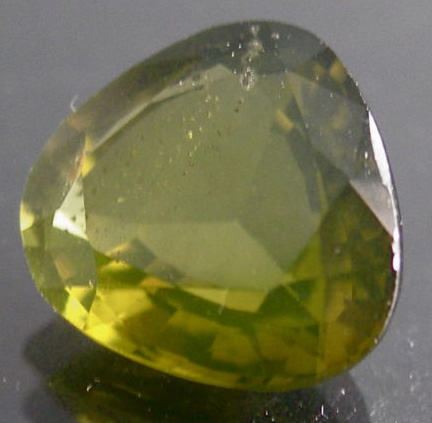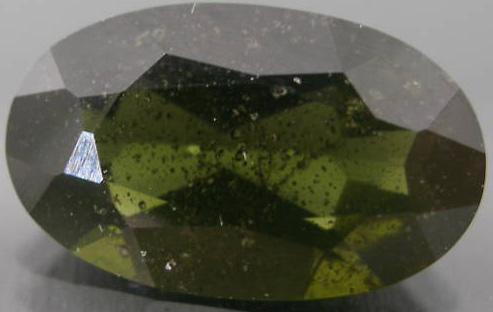Ekanite

Ekanite
(From Sri Lanka. Weight: 1.84 carats)
Image © supplied by Woodmansee* Gems
Gemstones like diamonds, rubies and emeralds are collected and prized by everyone across the world. But there are other rare and precious gemstones which are not so popular since they are not used in jewelry but are collected and prized by gemstone experts. One such gemstone is the Ekanite. Ekanite are extremely rare. Gemstone quality crystals of Ekanite are rarer. Gemstones of Ekanite without inclusion are extremely rare and command high prizes amongst the gemstone experts.
Ekanite History & Etymology:
Ekanite was discovered in 1953 in Ratnapura in Sri Lanka, in the gemstone gravels. Ekanite derives its name from F. L. D. Ekanayake who first discovered them.
Ekanite Occurrence:
Ekanite gems are extremely rare and hence are found only in some localities across the world. Gemstone quality crystals of Ekanite are found in Sri Lanka where they were first discovered. Ekanite are also found in Mt. Sainte Hilaire in Quebec, Canada.
Ekanite Properties:
Ekanite are composed of calcium thorium silicate and hence have the molecular weight of 856 grams. Ekanite contain 9 percent of calcium, 27 percent of thorium, 26 percent of silicon and 37 percent of oxygen. The dominant silicon in Ekanite classifies Ekanite as silicates mineral.
Ekanite display tetragonal and trapezohedral prismatic properties. Ekanite occur in their natural form as extremely poorly formed pyramidal crystals which are barely 1 cm in size. Ekanite also occur as clusters of granular mass. The crystalline formation of Ekanite can also be spherical in shape. Twinning is however not observed in Ekanite.
The cleavages on Ekanite range from distinct to indistinct. Ekanite also display uneven to irregular fracturing. However like most rare and fractured gemstones Ekanite do not display conchoidal fracturing. But like most gemstones the gemstones of Ekanite are brittle and have Moh’s hardness ranging between 5.0 and 6.5. Ekanite are relatively dense with a density of 3.3 g/cm3 on an average.
Ekanite do not display properties of luminescence but are radioactive. Ekanite are considered to be extremely radioactive and are defined as 49 CFR. Ekanite are radioactive due to the presence of Thorium. The radioactivity of Ekanite is also measured in GRapi at approx. 542,000. This is the unit is by the Gamma Ray American Petroleum Institute Units. Other physical properties displayed by Ekanite are metamict due to the radioactive properties of the crystals.
Ekanite range from being colorless to light yellow. Light green and dark green crystals of Ekanite are extremely rare. Red and brown crystals of Ekanite are also available however they are never clear to the eye and always have inclusions. Ekanite are generally transparent and clear to the eye. But some coloring like red, brown and dark green make the Ekanite crystals appear translucent. The luster on the Ekanite crystals is vitreous, the vitreous luster continues on the cleavages of the crystals.
The refractive index of the Ekanite crystals lies between 1.590 and 1.596 while the birefringence is at 0.012. Ekanite naturally occur in the erratic and syenitic boulders as well as in the ejecta of volcanoes. Hence Ekanite are found in the Tombstone Mountains in Canada and in Case Collina in Italy. The clear gemstones of Ekanite command high prices which start at a hundred dollars for a fraction of a carat of Ekanite.

Ekanite
(From Sri Lanka. Weight: 2.84 carats)
Image © supplied by Woodmansee* Gems
Back to the Gemstones List home page - over 160 gemstones explored!
Please feel free to link to this page - copy / paste the text below: (click to select)
Privacy Policy | Cookie Policy | GDPR | About This Site / Terms

© gemstoneslist.com 2018


